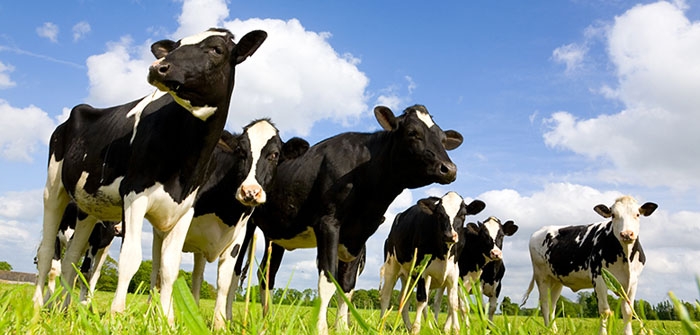
Fonterra will be feeling very pleased with the final outcomes from the much drawn-out 2018-2020 review of the Dairy Industry Restructuring Act (DIRA). Last minute changes as a consequence of Fonterra’s lobbying have made it very hard for any new start-ups to nibble away at Fonterra’s dominance.
These latest DIRA amendments were passed in late July and were supported across the political spectrum. They were inserted at a late stage in the Select Committee process, and were a fait accompli before outsiders realised what was happening. Someone in Fonterra deserves a job promotion for their lobbying skill.
The first big change is that Fonterra will no longer be required to take on suppliers who wish to leave one of Fonterra’s competitors. This makes it a high-risk strategy for any Fonterra dairy farmer to move to a competitor. There will be no way back, unless Fonterra so wishes.
The second big change is that Fonterra will only be required to supply milk to start-up companies until they have their own supply of 30 million litres in a year. Previously the requirement was for three years at that supply level before the drawbridge was raised. This change required only a few words to be altered, but the impact is considerable.
Agriculture Minister Damien O’Connor, in introducing the changes to Parliament, said that “the Government is determined to ensure the industry moves milk up the value chain”. He said “This change will enable Fonterra to invest in that higher-value end”.
In reality, the changes do something different. They reduce the risk of Fonterra being out-competed by new companies who want to focus on that higher-end. This outcome is important both for Fonterra and the nation, but in different ways.
Since the departure in 2018 of then CEO Theo Spiering and Chair John Wilson, Fonterra has been retreating from branded consumer products. It really had no option given that it had made such a mess of its internationally-focused endeavours. It is now retreating to a New Zealand-based company with a predominant focus on commodities and ingredients. The new management has quietly acknowledged that the previous team over-reached, which is a polite term for multiple stuff-ups.
There is a logic to Fonterra now ‘staying in its lane’. This lane is the low-cost processing of milk into dairy commodities and some specialised ingredients. This is what Fonterra has always done well and it is the low-risk model that a majority of its farmer members want. However, this is far from the notion of Fonterra being a ‘national champion’, which is a term widely used over the years in relation to national-level economic aspirations.
When Fonterra was created in 2001, this notion of a ‘national champion’ was what drove the Labour Government of the time to support the formation of Fonterra. In contrast, the National Party of that time contained a cohort of members who argued for a more competitive model in line with the Commerce Act. Fonterra’s formation required legislative exemption from key provisions of that Act. It would not have happened without the belief that Fonterra could be New Zealand’s national economic champion.
Within the current Labour Government, echoes of Fonterra being a national champion still live on strongly. The inherent conflict between the low-risk model based on commodities and ingredients, and a more entrepreneurial higher-value but also higher-risk consumer-focused company, has never been recognised.
In contrast, within academic circles we did understand the inherent conflict between those models. They require a different company DNA. To use a classic term in strategic management, it was always likely that Fonterra would get ‘stuck in the middle’, neither one thing nor the other. This was something that often came up at seminars and in tea-room discussions.
Right now, Fonterra is wending its way back to its roots as a low-cost processor of commodities and ingredients, and it has the company DNA to achieve this. It still has more divestments to make, certainly in China with Beingmate and China Farms, also in Brazil, almost certainly in Chile, and with a likelihood that more pain has to be endured in Australia.
The good news is that with inflated asset prices, it’s a reasonable time to divest some assets. The value of Beingmate shares in particular has been rising in recent months, if only Fonterra can find a buyer. The problem for Fonterra is that the regulations require that the Beingmate transaction has to be off-market. Otherwise, Fonterra can only dribble the shares onto the Shenzhen Exchange.
To a large extent, New Zealand can now forget about export-oriented consumer-focused dairy companies emerging in New Zealand using New Zealand capital. It would always have been hard work, but now, with the DIRA changes, the hurdle is too great. However, there is still one opportunity for differentiation. That opportunity is for milk that is free of A1 beta-casein, known as ‘A2 milk’.
Fonterra fought the concept of A2 milk from the outset nearly 20 years ago. Fonterra saw A2 as a risk rather than an opportunity. Then, in a remarkable turnaround, Fonterra announced in February 2018 that they were forming a partnership with The a2 Milk Company (A2M) primarily to supply ingredients.
At the time, it seemed an exciting move. But alas, Fonterra messed-up badly with that agreement. It effectively meant that Fonterra could not sell A2 ingredients to anyone apart from A2M unless A2M agreed. And as I found out when asked to assist an overseas company in obtaining such products, A2M was never going to agree to that. So, what that agreement achieved was to effectively take A2M’s potentially biggest competitor out of the market.
Most of the big international dairy companies are now putting together A2 dairy offerings but none can purchase those A2 ingredients from Fonterra. Fonterra could still be the global leader in A2 ingredients, sold through long-term supply contracts. But it cannot happen until the current agreement between Fonterra and A2M runs its course.
Ironically, the biggest New Zealand value-add dairy company is The a2 Milk Company itself (coded A2M on the ASX and ATM on the NZX). Although the Head Office is in Auckland, all of the key executives are in Australia, China and the USA, with the Chair based in the UK. Most of the shares are also held by investors outside New Zealand. (For those wanting further information on this company and its journey, I have been writing about it for more than 15 years, with many of those articles at my own site.
A2M continues its journey of exponential growth, with a further increase of over 30 percent in annual profit recently announced. The company is now valued at around $NZ15 billion, well over twice that of Fonterra. In recent days, A2M has also announced non-binding plans to purchase 75.1% of struggling Mataura Valley Milk with the intention to repurpose it for production of a2 Platinum™ infant formula and other nutritional products. The other partner in this company will be the Chinese Government through a state-owned company, with that Chinese company down-selling its existing shareholding in Mataura Valley Milk to make room for A2M.
The ‘bottom line’ is that any future competition for Fonterra will come from either existing players or well-funded overseas entities. It is too hard for local start-ups to get an export-focused foothold.
*Keith Woodford was Professor of Farm Management and Agribusiness at Lincoln University for 15 years through to 2015. He is now Principal Consultant at AgriFood Systems Ltd. His articles are archived at http://keithwoodford.wordpress.com. You can contact him directly here.
4 Comments
This is a game changer for Fonterra but whether they can play the new game well remains to be seen. Spierings did a serious amount of damage to Fonterra but he was employed by the board who have some serious questions to answer.. as do the Shareholder Council members. Norgate's idea was good.. subsequent execution was p1sspoor. That's what happens when an organisation chases "overseas experience" and ignores local expertise.. 20 years of potential gains down the gurgler.
Disagree - Norgate was of the same era/mindset as Elder, Fernyhough, Kerr, Brash.... the list goes on.
It was simply wrong, was based on a temporary delusion.
Fonterra's moves since remind me that ignorance and arrogance are common bedfellows.
Hook, just to clarify, the only current Director, who was on the Board at the time of Spierings appointment, was John Monaghan, and he is retiring this year. None of the other current Board members were on the Board at the time of Spierings appointment. Time to move on from the past.
How long have a2 got Fonterra stitched up for?

We welcome your comments below. If you are not already registered, please register to comment
Remember we welcome robust, respectful and insightful debate. We don't welcome abusive or defamatory comments and will de-register those repeatedly making such comments. Our current comment policy is here.